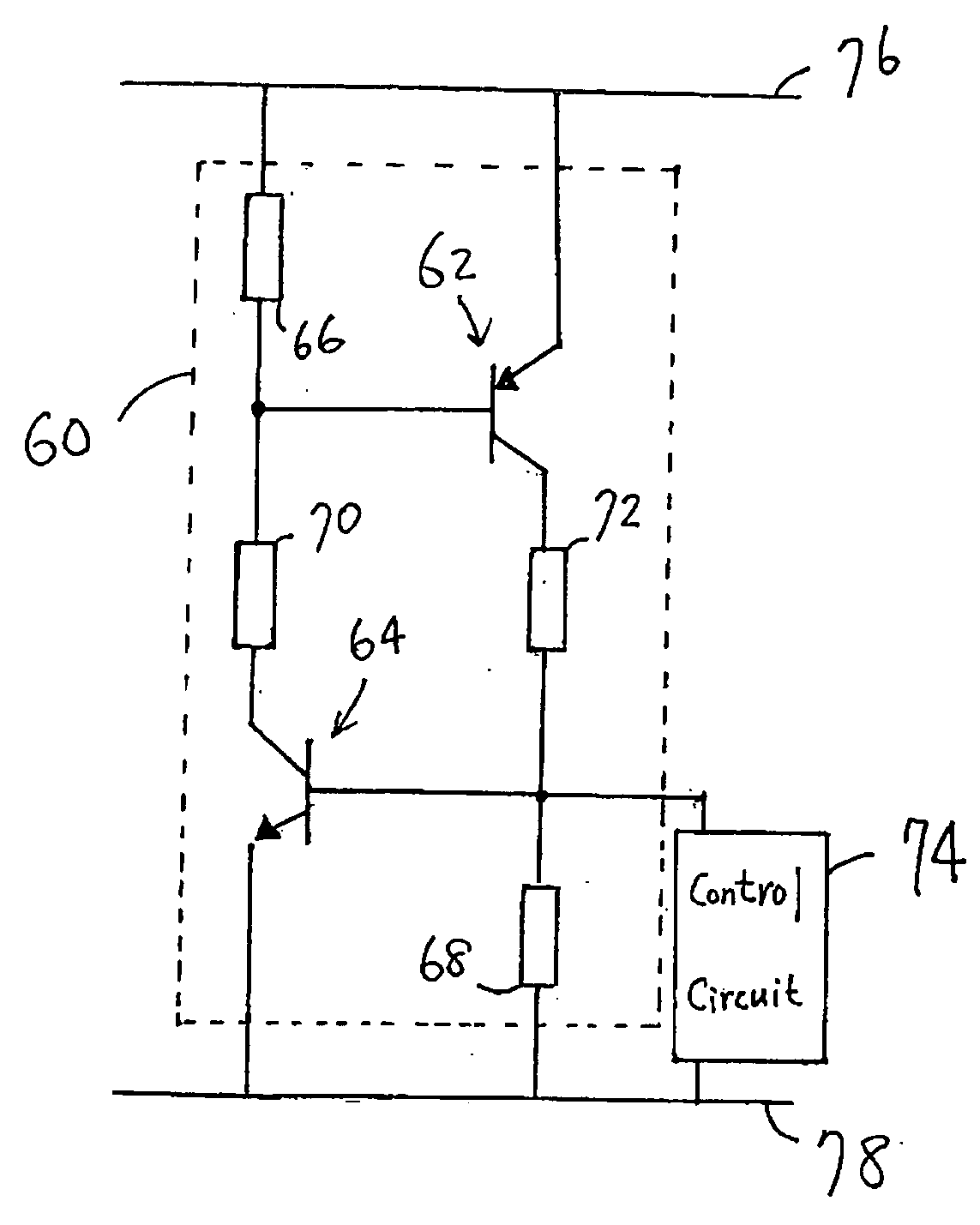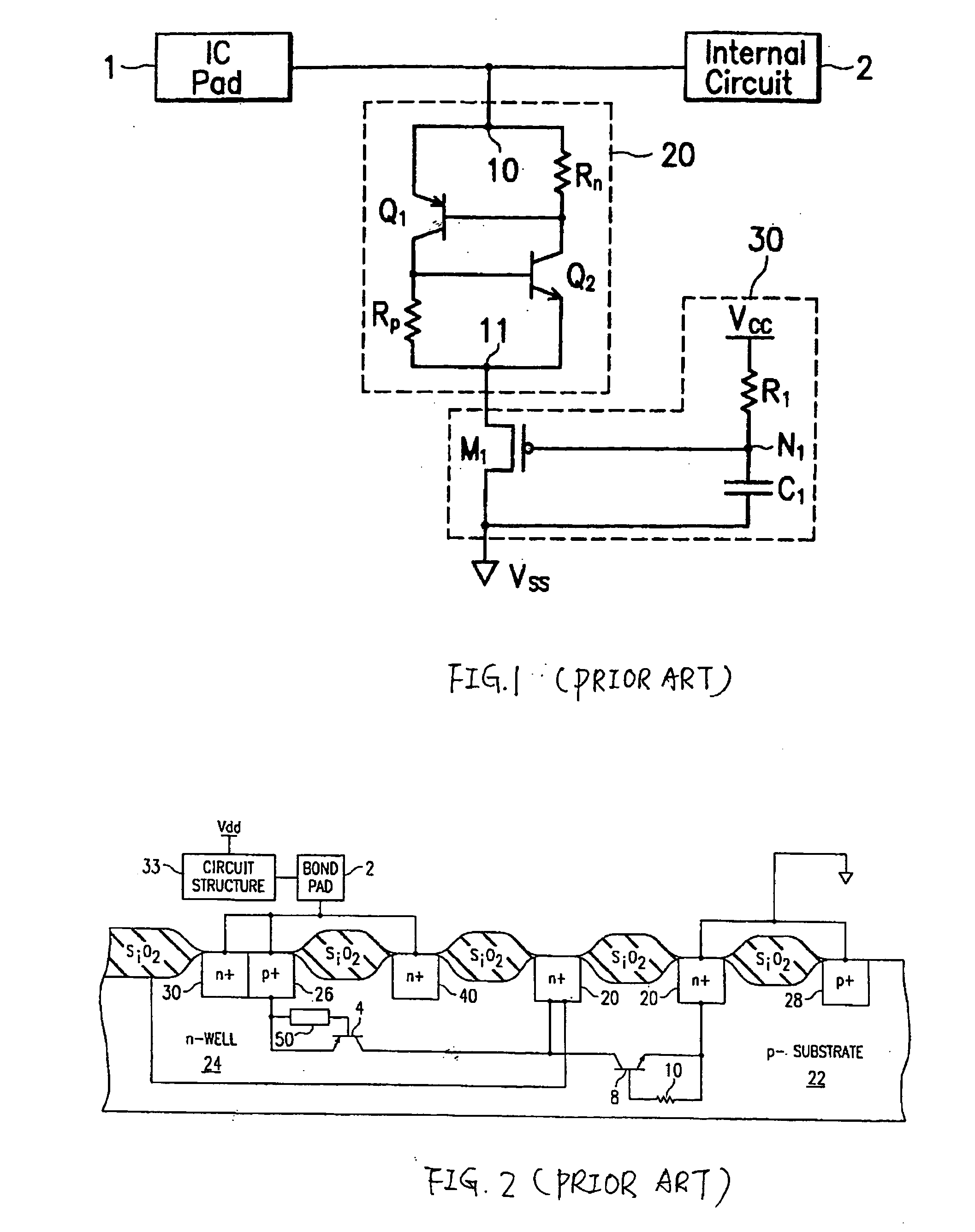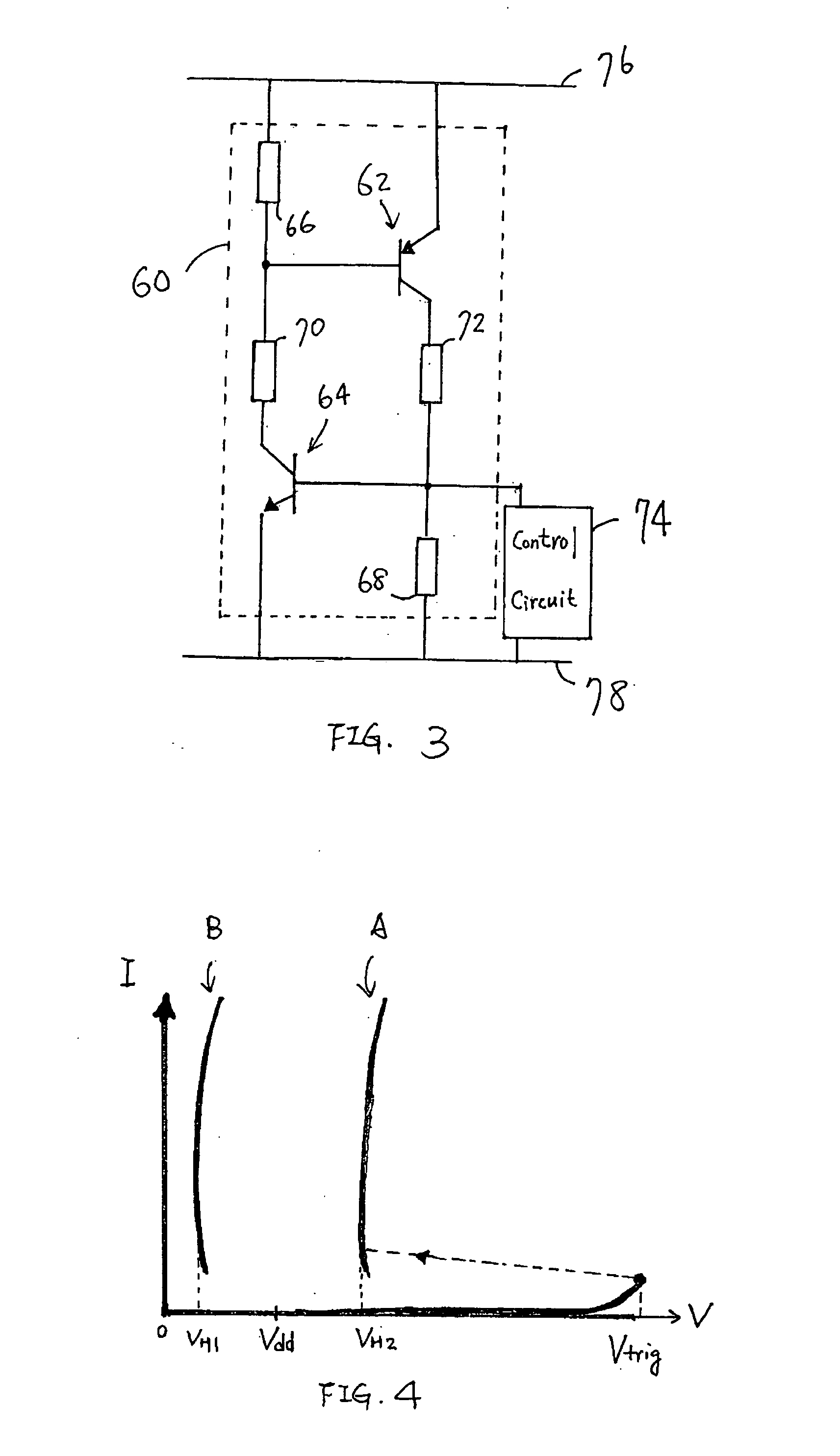Silocon-controlled rectifier with dynamic holding voltage for on-chip electrostatic discharge protection
- Summary
- Abstract
- Description
- Claims
- Application Information
AI Technical Summary
Benefits of technology
Problems solved by technology
Method used
Image
Examples
Embodiment Construction
[0002] 1. Field of the Invention
[0003] This invention pertains in general to a semiconductor device and, more particularly, to an electrostatic discharge protection device that is immune to latch-up during normal operations.
[0004] 2. Background of the Invention
[0005] A semiconductor integrated circuit ("IC") is susceptible to an electrostatic discharge ("ESD") event, which may cause damage to the IC, such as one with advanced metal-oxide-semiconductor ("MOS") transistors. Advanced MOS transistors have traditionally required certain properties such as short channel lengths, low threshold voltages, and thin gate oxide layers. These MOS transistors, manufactured using quarter-submicron complemental metal-oxide-semiconductor ("CMOS") processes with lightly-doped drain ("LDD") structures and clad silicide diffusions, are more vulnerable to ESD.
[0006] An ESD event is an electrical discharge of a current (positive or negative) for a short duration during which a large amount of current is ...
PUM
 Login to View More
Login to View More Abstract
Description
Claims
Application Information
 Login to View More
Login to View More - R&D
- Intellectual Property
- Life Sciences
- Materials
- Tech Scout
- Unparalleled Data Quality
- Higher Quality Content
- 60% Fewer Hallucinations
Browse by: Latest US Patents, China's latest patents, Technical Efficacy Thesaurus, Application Domain, Technology Topic, Popular Technical Reports.
© 2025 PatSnap. All rights reserved.Legal|Privacy policy|Modern Slavery Act Transparency Statement|Sitemap|About US| Contact US: help@patsnap.com



